Prior to 2014 the Challenge Cup featured six clubs outside the three main European leagues. This was a point of frustration for many as there was a feeling they were selected poorly. They included four Italian clubs along with two others, the Bucharest Wolves, along with often a mid table Spanish side as the top side didn't have the money or desire to compete, or for one season a Portuguese selection.
For selection sides like Bucharest Wolves assembling with little preparation for two week blocks to take on much more cohesive club sides was not ideal. The Spanish side wasn't even the best in Spain. Whilst Georgian and Russian representation was being omitted despite usually beating Iberian opponents internationally and the latter clearly having some stronger clubs than those that were competing.
Meanwhile the Italian clubs were remarkably poor. Calvisano were the Italian league champions in 2013/14, yet still lost home and away to the Bucharest Wolves. Even Bizkaia Gernika in 2012/13, despite qualifying on the back of a sixth place domestic league finish still beat Rovigo home and away.
The change in 2014 which introduced the Continental Shield and opened up the Challenge Cup to a meritocratic qualifying basis was much welcomed. However it hasn't quite turned out as has hoped.
Initially the Russian clubs which were full of internationals and strengthened by experienced players from across Eastern Europe backed up what many had thought. In their first European campaign in 2015/16 Enisey-STM took two scalps from major leagues in Brive (10-7) and Newcastle (24-7). Away trips were trickier, their worst loss was 55-7 in Newcastle, but in light of this season you would take that as a worst result.
The following season they also beat Worcester (19-12) and the Dragons (38-18), whilst only had one loss over 40 pts in their last match away to Worcester (57-14). Their average scoreline over the first two seasons was 14-32. They were winning more often than they conceding over 50+ points.
This was in the context of being new and inexperienced in the competition and with the disadvantage of playing matches in what is their off season and some of the "home" matches being played miles away in Sochi. It was hoped this could be a platform to potentially continue to achieve more credibility and experience on the European stage over the following years.
That has not happened though and their fortunes in the 2018/19 season took a dramatic nosedive. Instead of conceding 50+ pts just once a season, they conceded over that in every match bar one, with even Zebre thrashing them. Whilst they took some scalps in the matches hosted in Russia initially, this season they lost 82-21 to La Rochelle and 65-9 to Bristol. Finally their campaign finished atrociously conceding 17 tries in a 107-19 slaughter in Bristol after an early red card.
Meanwhile Timisoara who also at the time had several experienced internationals looked in the qualifying competition like they could possibly perform similarly to Enisey-STM. They were beating Italian clubs in the Continental Shield by clearer margins than the Bucharest Wolves did. Rovigo and Calvisano were the top two teams in the Italian league in 2015/16 and the Romanians beat the former 45-13, and the latter twice home and away over two legs 64-40.
Unfortunately once they reached the Challenge Cup in 2016/17 Timisoara did not at all fare well. Not only were results bad, but they ended up with a sizeable fine for a cancelled match due to snow. There has only been bad news for the club ever since then, with talk of unpaid players and low morale, their main backer reducing investment, and players have been leaving.
They couldn't qualify for the 2018/19 Challenge Cup on merit getting knocked out by Heidelberger RK, but got through after the Germans were kicked out for ownership conflicts. It was widely expected that they would struggle badly, but in getting hit by yet another fine for a snowy pitch, and then taking 59-3 and 111-3 humiliating hammerings against the Dragons and Bristol it still managed to be a total horror campaign even despite the incredibly low expectations.
The Italians incidentally in the Continental Shield have also done much to alter the view of how having four of them in the old format was certainly not selecting the best possible teams. In the 2016/17 tournament Enisey-STM beat Mogliano 97-7 over two legs, whilst Krasny Yar beat Mogliano 48-24, and Rovigo 42-11. Even German champions Heidelberger RK could beat the Italians and in the 2017/18 season scored wins over the both the top two clubs (Petrarca Padova and Calvisano).
Whilst the Continental Shield also initially seemed a good concept, it has been underwhelming. If you look at the EPCR site you could be forgiven for not realising it existed given the little attention it gets. It has been cut down in size with clubs from Spain, Portugal and Germany all withdrawing due to (likely) financial reasons and possible lack of desire to really compete at Challenge Cup level.
This year there were only two competitors outside of Italy in the Continental Shield, and one of those (a selection side from Belgium the "Belgian Barbarians XV") was hardly prepared at all and was a bit of joke getting annihilated 68-12 and 89-7 home and away to Rovigo.
These recent results call into question whether there is worthwhile future for the Continental Shield and teams outside the main three European leagues competing in the Challenge Cup right now.
If there was more money to be made either from TV, sponsorship, and a growing fanbase from competing then this would be a non-question. However there does not appear to be much evidence this is the case given the amount of teams who have withdrawn from the Continental Shield. Enisey-STM playing in Sochi drew an attendance reported as small as 100 and was not televised. The probability that Challenge Cup participation right now is a loss maker for these clubs is pretty high.
For now it is hard to see any real point from the Romanian perspective at least to continue putting resources towards a series of thumpings and fines for snowy pitches. This is particularly relevant for a club like Timisoara who have reportedly been struggling to pay players and seem in little position to either produce or recruit the amount of talent to compete.
Some have suggested a return to the selection squads like Bucharest Wolves. They were not great (average scoreline in their 2014/15 campaign was 44-13), but at least did not suffer to the degree Timisoara have and get fines for snowy pitches. But again given the state they are in frankly Challenge Cup should not be the priority for Romanian rugby right now. There is also a reasonably strong chance such a side would be much worse in 2020 than they may have been 5 years ago.
As for the Russian clubs their downfall has been slightly more puzzling given a lot of their team getting thumped this season are the same players who were a lot more competitive only a couple years back. However one possibility is fact they are mostly the same team could be part of the problem.
They are not lacking experience, but the core of their squad looks very old and could just be over the hill now at this level. They went into each match this season with a starting XV with an average age of 30 or 31. Half of the XV against Zebre is aged over 32 with a handful veterans over 35.
At that age a couple years difference can be noticeable and several of those players are probably nearing retirement. This is a side 3 or 4 years older than the average professional team, the rotational Bristol team that pasted them had an average age over 5 years younger.
This brings us onto a similar theme. It has escaped so much attention as Romania as it has not to the same degree or been as badly exposed, but Russia too over the past few years have also had a relatively poor time of late at junior level and been struggling to find the quantity of new young talent from those sides to come through and been relying on a core of older players.
Hence why at national team level they were giving a debut to a 34 year old scrum half (who was the 17th member of their U21 side of 2004 of which remarkably 8 players were still active in 2018). Also possibly hence why we see Enisey-STM enter the Challenge Cup this year with what is an ageing squad that has still barely changed since they first entered the competition back in 2015.
Again to reiterate the situation for Russia is not as dismal as it is for Romania but the general theme remains the same. They have neither been able to produce the level of talent to feed into their domestic teams, nor have they been able to recruit it from overseas either.
So what about the teams that have been considerably more successful in producing talent?
Georgia are notably the clear standouts in this regard, but it's also clear their domestic setup is not producing teams to the level to be competitive at the Challenge Cup. The Didi 10 champions from last season Lokomotivi Tbilsi have recently been playing in the Continental Shield against Italian opposition. Three of four matches those were close contests. If they were going to be competitive at the higher level that opposition would pose no problems.
Obviously the Georgian the domestic level is likely to be weakened with a considerable number of their players abroad, but that doesn't tell the whole story though due to the large percentage of those being props. There still actually remains some decent young talent which is feeding into the Didi 10. We saw this with the U20s and in the upset from the young fully Georgian based Georgia XV team vs Argentina XV in the summer (which didn't even include many domestic based international squad members).
But there has not been a really strong club side in Georgia owing to how dispersed across the Didi 10 that talent is. There are no one or two teams who stockpile the best talent and dominate unlike some other leagues. In November there were 8 domestic based players in the squad across 6 of the teams. Over the past five seasons five different teams have topped the regular season table.
That is in complete contrast to Romania and Russia in recent times. The SuperLiga final has been Timisoara vs Baia Mara in five of the past six seasons. In Russia it has been Enisey-STM vs Krasny Yar for eight consecutive seasons. Also been similar in Japan, up until this year Panasonic and Suntory shared all the past 8 Top League titles between them. That has made their league much more boring, but also meant a side like Enisey (previously at least), or Panasonic and Suntory (on paper clearly the strongest clubs from a Tier 2 nation) can be able to compete with low end clubs in elite leagues.
Also of course need to remember the Georgians have only been having top tier level youth teams for four years. It will take time for that to feed into the depth of the league which has virtually zero overseas recruitment to boost it. Although clearly the fact they continue to produce a good level of talent, puts them in a better position to potentially field a reasonable side in the competition in future if not yet.
The other REC teams to consider are the Iberians, who both remain largely amateur, and in some cases lack ambition, and have been reluctant to compete in Continental Shield with the costs involved.
A bit of talk has happened in Spain about forming a more professional league. However for now mentions of professionalism is just talk, and they are still miles away from being talked about as possible competitors at Challenge Cup level and the impression you get is don't even want to be either.
So unfortunately being realistic it is hard to see really anybody representative from the REC nations be competitive in the Challenge Cup in the immediate term. The window where the Russian clubs could pick up wins appears to have passed, the Romanians too will unlikely get any better and those have been countries where the strongest REC clubs have come from in recent years. The Georgians maybe have potential upside, but not yet, especially with no club hording all the top players.
Hopefully there will still be a future for REC clubs to be more competitive in the Challenge Cup at some point. It's just right now that seems even more of a long term goal. In the meantime it may be of better use to focus more resources elsewhere with a possible view of coming back when in a stronger position. This season with Timisoara getting fined for snow and embarrassed by Northampton, or Enisey-STM in their off season travelling over 5,000km to Sochi to get thrashed by Bristol in front of 100 people. It simply seems now there is little value in the Challenge Cup for these clubs in just repeating that.
For selection sides like Bucharest Wolves assembling with little preparation for two week blocks to take on much more cohesive club sides was not ideal. The Spanish side wasn't even the best in Spain. Whilst Georgian and Russian representation was being omitted despite usually beating Iberian opponents internationally and the latter clearly having some stronger clubs than those that were competing.
Meanwhile the Italian clubs were remarkably poor. Calvisano were the Italian league champions in 2013/14, yet still lost home and away to the Bucharest Wolves. Even Bizkaia Gernika in 2012/13, despite qualifying on the back of a sixth place domestic league finish still beat Rovigo home and away.
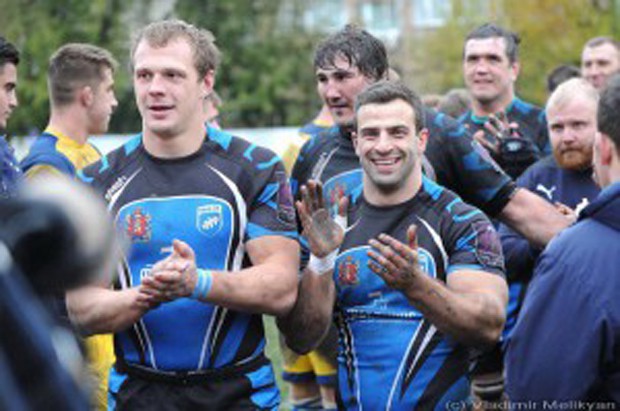 |
| Enisey-STM players celebrate their win 19-12 over Worcester in 2016 |
The change in 2014 which introduced the Continental Shield and opened up the Challenge Cup to a meritocratic qualifying basis was much welcomed. However it hasn't quite turned out as has hoped.
Initially the Russian clubs which were full of internationals and strengthened by experienced players from across Eastern Europe backed up what many had thought. In their first European campaign in 2015/16 Enisey-STM took two scalps from major leagues in Brive (10-7) and Newcastle (24-7). Away trips were trickier, their worst loss was 55-7 in Newcastle, but in light of this season you would take that as a worst result.
The following season they also beat Worcester (19-12) and the Dragons (38-18), whilst only had one loss over 40 pts in their last match away to Worcester (57-14). Their average scoreline over the first two seasons was 14-32. They were winning more often than they conceding over 50+ points.
This was in the context of being new and inexperienced in the competition and with the disadvantage of playing matches in what is their off season and some of the "home" matches being played miles away in Sochi. It was hoped this could be a platform to potentially continue to achieve more credibility and experience on the European stage over the following years.
That has not happened though and their fortunes in the 2018/19 season took a dramatic nosedive. Instead of conceding 50+ pts just once a season, they conceded over that in every match bar one, with even Zebre thrashing them. Whilst they took some scalps in the matches hosted in Russia initially, this season they lost 82-21 to La Rochelle and 65-9 to Bristol. Finally their campaign finished atrociously conceding 17 tries in a 107-19 slaughter in Bristol after an early red card.
 |
| Timisoara beat Italian clubs with ease to qualify for the Challenge Cup in 2016 but their time actually in the competition has ended up being utterly forgettable |
Meanwhile Timisoara who also at the time had several experienced internationals looked in the qualifying competition like they could possibly perform similarly to Enisey-STM. They were beating Italian clubs in the Continental Shield by clearer margins than the Bucharest Wolves did. Rovigo and Calvisano were the top two teams in the Italian league in 2015/16 and the Romanians beat the former 45-13, and the latter twice home and away over two legs 64-40.
Unfortunately once they reached the Challenge Cup in 2016/17 Timisoara did not at all fare well. Not only were results bad, but they ended up with a sizeable fine for a cancelled match due to snow. There has only been bad news for the club ever since then, with talk of unpaid players and low morale, their main backer reducing investment, and players have been leaving.
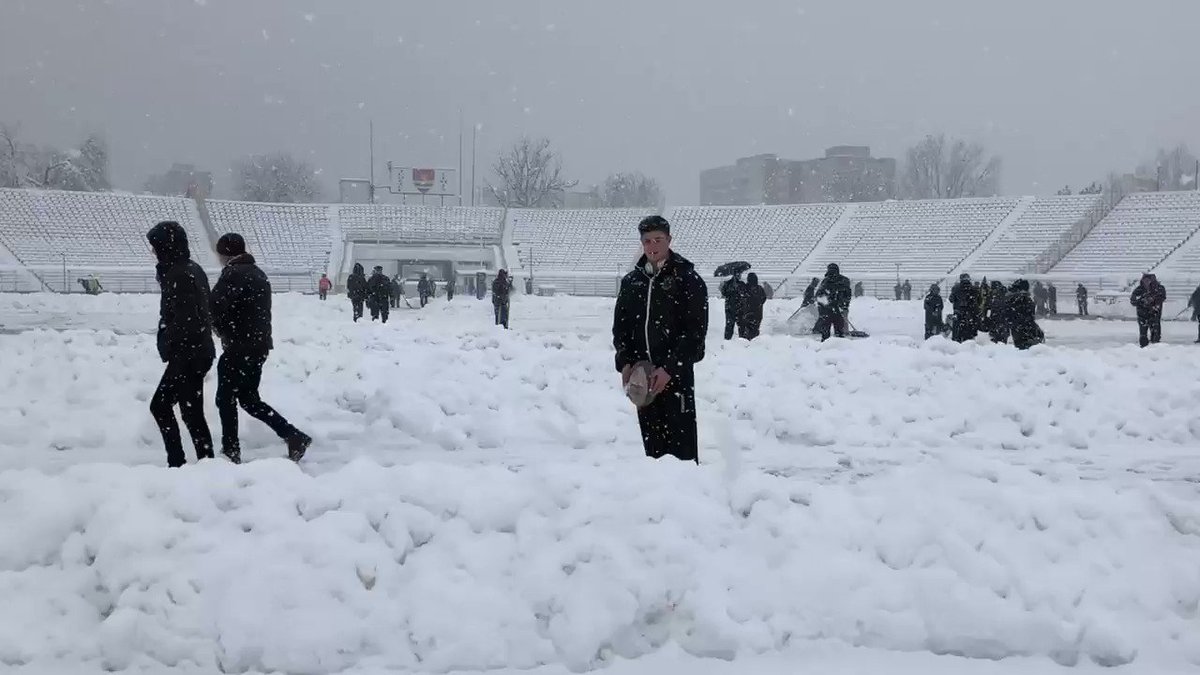 |
| The snowy pitch that cost Timisoara yet another €30,000 fine from EPCR |
They couldn't qualify for the 2018/19 Challenge Cup on merit getting knocked out by Heidelberger RK, but got through after the Germans were kicked out for ownership conflicts. It was widely expected that they would struggle badly, but in getting hit by yet another fine for a snowy pitch, and then taking 59-3 and 111-3 humiliating hammerings against the Dragons and Bristol it still managed to be a total horror campaign even despite the incredibly low expectations.
The Italians incidentally in the Continental Shield have also done much to alter the view of how having four of them in the old format was certainly not selecting the best possible teams. In the 2016/17 tournament Enisey-STM beat Mogliano 97-7 over two legs, whilst Krasny Yar beat Mogliano 48-24, and Rovigo 42-11. Even German champions Heidelberger RK could beat the Italians and in the 2017/18 season scored wins over the both the top two clubs (Petrarca Padova and Calvisano).
Whilst the Continental Shield also initially seemed a good concept, it has been underwhelming. If you look at the EPCR site you could be forgiven for not realising it existed given the little attention it gets. It has been cut down in size with clubs from Spain, Portugal and Germany all withdrawing due to (likely) financial reasons and possible lack of desire to really compete at Challenge Cup level.
This year there were only two competitors outside of Italy in the Continental Shield, and one of those (a selection side from Belgium the "Belgian Barbarians XV") was hardly prepared at all and was a bit of joke getting annihilated 68-12 and 89-7 home and away to Rovigo.
 |
| The reported crowd at Enisey-STM vs Bristol at Sochi was a mere 100 |
These recent results call into question whether there is worthwhile future for the Continental Shield and teams outside the main three European leagues competing in the Challenge Cup right now.
If there was more money to be made either from TV, sponsorship, and a growing fanbase from competing then this would be a non-question. However there does not appear to be much evidence this is the case given the amount of teams who have withdrawn from the Continental Shield. Enisey-STM playing in Sochi drew an attendance reported as small as 100 and was not televised. The probability that Challenge Cup participation right now is a loss maker for these clubs is pretty high.
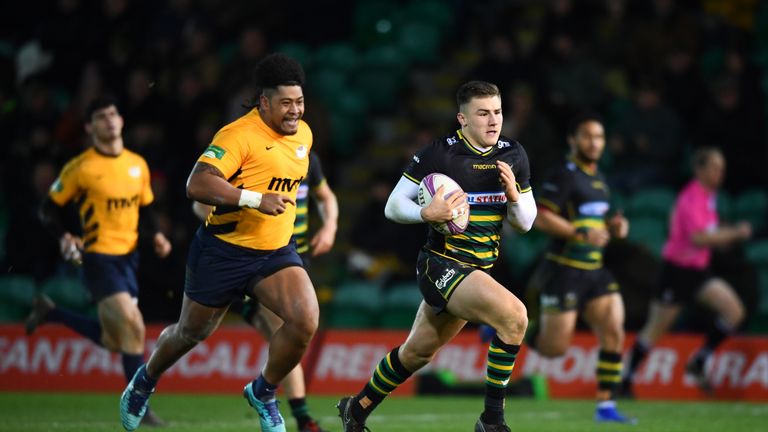 |
| Timisoara's 111-3 annihilation against Northampton may be the last we see of them competing in the Challenge Cup |
Some have suggested a return to the selection squads like Bucharest Wolves. They were not great (average scoreline in their 2014/15 campaign was 44-13), but at least did not suffer to the degree Timisoara have and get fines for snowy pitches. But again given the state they are in frankly Challenge Cup should not be the priority for Romanian rugby right now. There is also a reasonably strong chance such a side would be much worse in 2020 than they may have been 5 years ago.
As for the Russian clubs their downfall has been slightly more puzzling given a lot of their team getting thumped this season are the same players who were a lot more competitive only a couple years back. However one possibility is fact they are mostly the same team could be part of the problem.
They are not lacking experience, but the core of their squad looks very old and could just be over the hill now at this level. They went into each match this season with a starting XV with an average age of 30 or 31. Half of the XV against Zebre is aged over 32 with a handful veterans over 35.
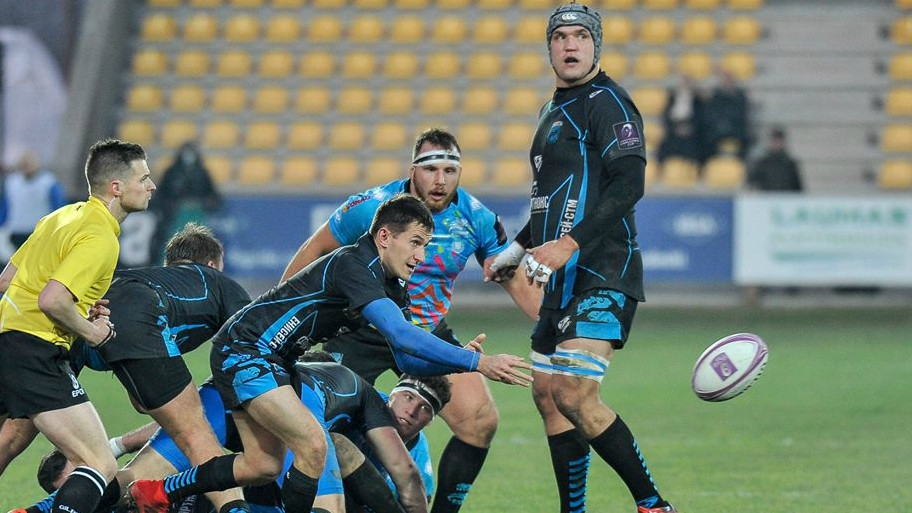 |
| Enisey-STM have an ageing squad with an average of 31 that has barely changed from their debut Challenge Cup season |
At that age a couple years difference can be noticeable and several of those players are probably nearing retirement. This is a side 3 or 4 years older than the average professional team, the rotational Bristol team that pasted them had an average age over 5 years younger.
This brings us onto a similar theme. It has escaped so much attention as Romania as it has not to the same degree or been as badly exposed, but Russia too over the past few years have also had a relatively poor time of late at junior level and been struggling to find the quantity of new young talent from those sides to come through and been relying on a core of older players.
Hence why at national team level they were giving a debut to a 34 year old scrum half (who was the 17th member of their U21 side of 2004 of which remarkably 8 players were still active in 2018). Also possibly hence why we see Enisey-STM enter the Challenge Cup this year with what is an ageing squad that has still barely changed since they first entered the competition back in 2015.
Again to reiterate the situation for Russia is not as dismal as it is for Romania but the general theme remains the same. They have neither been able to produce the level of talent to feed into their domestic teams, nor have they been able to recruit it from overseas either.
So what about the teams that have been considerably more successful in producing talent?
Obviously the Georgian the domestic level is likely to be weakened with a considerable number of their players abroad, but that doesn't tell the whole story though due to the large percentage of those being props. There still actually remains some decent young talent which is feeding into the Didi 10. We saw this with the U20s and in the upset from the young fully Georgian based Georgia XV team vs Argentina XV in the summer (which didn't even include many domestic based international squad members).
 |
| Unlike some other leagues, there has not been a really dominant team in Georgia with the top talent spread across clubs and 5 different regular season winners in 5 years |
But there has not been a really strong club side in Georgia owing to how dispersed across the Didi 10 that talent is. There are no one or two teams who stockpile the best talent and dominate unlike some other leagues. In November there were 8 domestic based players in the squad across 6 of the teams. Over the past five seasons five different teams have topped the regular season table.
That is in complete contrast to Romania and Russia in recent times. The SuperLiga final has been Timisoara vs Baia Mara in five of the past six seasons. In Russia it has been Enisey-STM vs Krasny Yar for eight consecutive seasons. Also been similar in Japan, up until this year Panasonic and Suntory shared all the past 8 Top League titles between them. That has made their league much more boring, but also meant a side like Enisey (previously at least), or Panasonic and Suntory (on paper clearly the strongest clubs from a Tier 2 nation) can be able to compete with low end clubs in elite leagues.
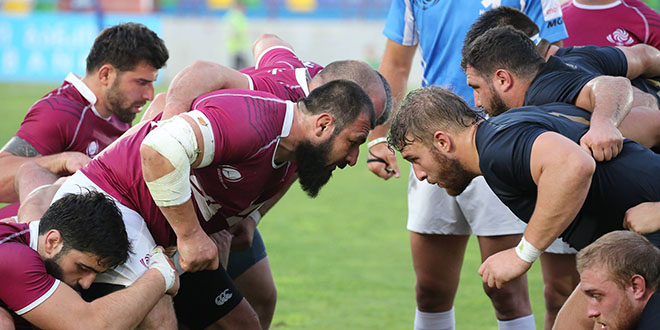 |
| Georgia XV showed there is some talent in the Didi 10 with their upset win over Argentina XV in the Tbilisi Cup last year |
Also of course need to remember the Georgians have only been having top tier level youth teams for four years. It will take time for that to feed into the depth of the league which has virtually zero overseas recruitment to boost it. Although clearly the fact they continue to produce a good level of talent, puts them in a better position to potentially field a reasonable side in the competition in future if not yet.
The other REC teams to consider are the Iberians, who both remain largely amateur, and in some cases lack ambition, and have been reluctant to compete in Continental Shield with the costs involved.
A bit of talk has happened in Spain about forming a more professional league. However for now mentions of professionalism is just talk, and they are still miles away from being talked about as possible competitors at Challenge Cup level and the impression you get is don't even want to be either.
So unfortunately being realistic it is hard to see really anybody representative from the REC nations be competitive in the Challenge Cup in the immediate term. The window where the Russian clubs could pick up wins appears to have passed, the Romanians too will unlikely get any better and those have been countries where the strongest REC clubs have come from in recent years. The Georgians maybe have potential upside, but not yet, especially with no club hording all the top players.
Hopefully there will still be a future for REC clubs to be more competitive in the Challenge Cup at some point. It's just right now that seems even more of a long term goal. In the meantime it may be of better use to focus more resources elsewhere with a possible view of coming back when in a stronger position. This season with Timisoara getting fined for snow and embarrassed by Northampton, or Enisey-STM in their off season travelling over 5,000km to Sochi to get thrashed by Bristol in front of 100 people. It simply seems now there is little value in the Challenge Cup for these clubs in just repeating that.
No comments :
Post a Comment